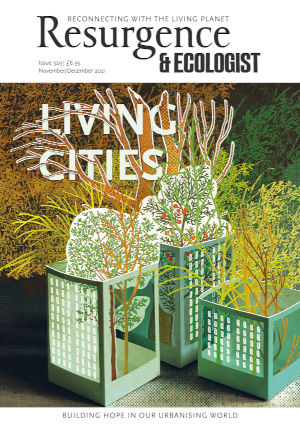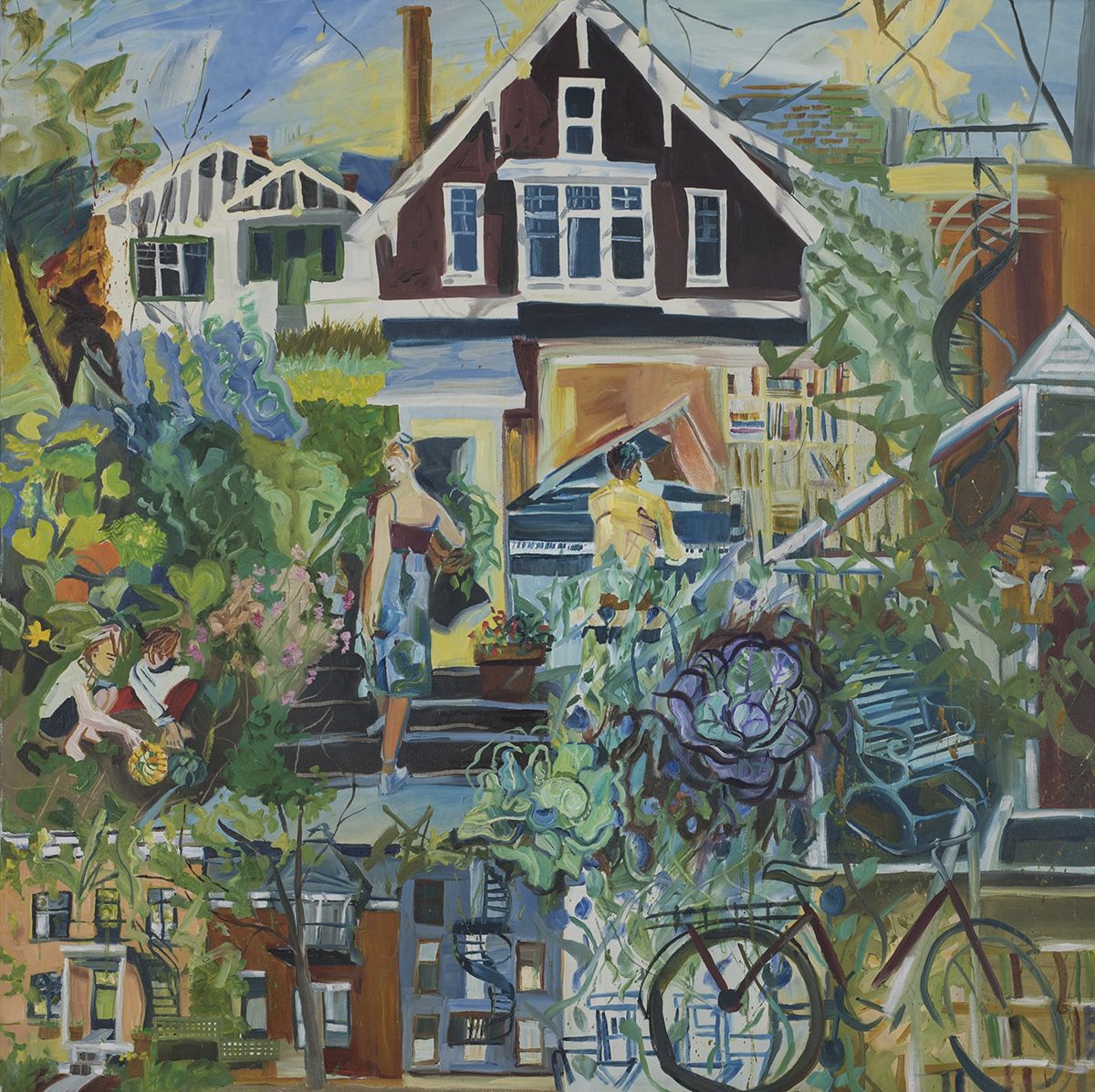One day I was visiting a friend of mine in his office in central London, near Oxford Street. He offered me fresh mint tea with some delicious honey. Looking at the vibrant green leaves of mint I said, “Where do you get such fresh mint? Normally people offer me a tea bag of dry mint!”
“This mint is from my garden! Would you like to see my garden?” my friend asked.
“Where is your garden?” I wondered.
“Come with me.” My friend stood up and led the way up the stairs and onto the roof. There it was, a gorgeous garden on the top of an office building in the middle of a metropolis. There was rosemary and thyme, mint and marigolds and many more flowers and herbs. Butterflies were flying over the plants, and bees were buzzing around the beehives.
If my friend can grow mint and marigolds on the roof of his office, so can other Londoners, I thought. Not only flowers and herbs, but they can also grow fruits and vegetables. If you add together all the roof spaces of the entire city of London there are thousands of acres of empty spaces, which could be used to grow food and transform London into a garden city and a green and pleasant place to live.
In addition to roofs there are thousands of acres of empty walls. Why not create vertical gardens and see pears and plums, gooseberries and raspberries making the city walls literally fruitful and useful as well as beautiful?
Not only London, but let all the cities of the world come together to transform their urban landscapes into regenerative regions on our precious planet Earth. From London to Lisbon, from Berlin to Beijing, from Moscow to Montreal and from Nairobi to New Delhi, let all cities join the ecological paradigm to combat climate catastrophe.
With solar panels on roofs, cities can harvest the energy of the sun, and with water-collecting tanks they can harvest the rain. Who needs dark and dirty oil from the deep wells of hell when we can harvest bright and clean sunshine coming from the heavens above? As the age of fossil fuels is coming to an end, let us rediscover the power of renewable energy and live by the abundant gifts of sun, wind and water.
Let us redesign our towns and cities so that all citizens have easy access to wild Nature. There is no contradiction between fashion and foxgloves! Between theatres and thistles! Between cosmetics and camellias! Between restaurants and rivers! Let us welcome hydrangeas into our high streets. London is blessed to have Hampstead Heath, Richmond Park and many others parks and gardens. In fact 48% of London is gifted with green space. Let us celebrate that, cherish that, protect that, maintain that and even enlarge that. Green gardens are the greatest life insurance and health insurance for Londoners and for people in every city.
Just as no home is a proper home without a kitchen, no home is a proper home without a garden. Roof gardens, yes. The roofs of office buildings, shops, hospitals, schools and other large-scale public properties should become roof gardens. And all residential homes should have roof gardens as well as backyard gardens for flowers, herbs and vegetables, for sunbathing and for a picnic lunch in the sun. Good living is living with a garden. A garden should not be a luxury only for the rich. Access to a garden should be the birthright of everyone. Gardens should come before cars, computers and cameras. Fresh food and fresh air are essential human rights.
Let some of our fresh food come from within our cities, and the rest from within a 50 mile radius of every city, so that there is a harmonious relationship between rural, urban and suburban people. The transportation of foods, requiring the use of fossil fuels, from distant corners of the world, is a cause of climate catastrophe. Large-scale factory farms and agribusiness produce between 30% and 40% of greenhouse gases. Let us free our agriculture from the bondage of fossil fuels. Let city dwellers honour the work of family farms and small-scale food producers from the surrounding areas. Let the local producers sell their products at a just price in weekly farmers’ markets and pannier markets in every city.
Let all city children enjoy a regular and intimate relationship with land, farms, gardens and animals, so that the city children do not suffer from ‘Nature-deficit disorder’! Let us provide such opportunities for all city children, so that they grow up with deep knowledge, experience and love of Nature.
Let us redesign our cityscape and transform it into human-scale habitats. Schools, shops, doctors’ surgeries, libraries and workplaces should be within walking distance of all citizens. The idea of wasting hours and hours to commute to work should become a nightmare of the past. Walking more and driving less is an ecological imperative, as well as a health imperative. Walking is one solution to the problem of climate breakdown, and it is a therapy for the human mind, the human body and the human spirit. Let us free our cities from congestion and commuting. London used to be a honeycomb of self-contained towns and villages: Hampstead village, Camden Town, Kentish Town, and many others. Each of these areas of the city had its own culture and character.
Let us reclaim city neighbourhoods. When we know our neighbours, we can love our neighbours. Old city neighbourhoods were great places of solidarity. They were communities where true camaraderie flourished among people. But the new housing estates of modern cities have lost that sense of community and neighbourliness. As these soulless cities are designed and built by humans, they can be redesigned and rebuilt by humans. The time to do that is now. Cities powered by fossil fuels are part of the climate problem. When cities become powered by wind, water and sun they will become part of the climate solution.








